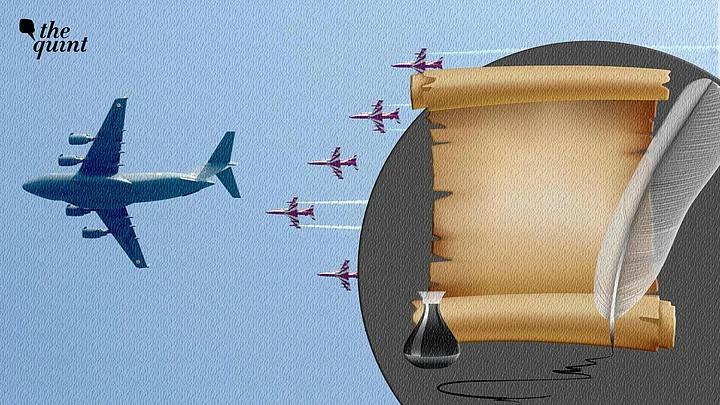Japan’s National Security Strategy (NSS), released in December 2022, defied convention and chose to identify China and Russia by name as strategic threats. It also recommended that the country double its defence budget. Several other major powers, such as the United States, France, and Russia, also release similar documents. However, despite being the second most populous country, the fifth largest economy, and a nuclear power with one of the world’s most powerful militaries, India does not publish any such document.
The Joint Military Doctrine released by the Integrated Defence Staff in 2017 comes closest to being such a document but its scope is limited. This gap in strategic planning needs to be bridged and India must seriously consider formulating and making public a National Security Doctrine.
What Exactly is an NSD?
A National Security Doctrine (NSD) usually describes the internal and external challenges facing a country, outlines its core interests, and sets guidelines for addressing current and prospective threats and opportunities. It also defines the state’s vision of the international system and the role it envisages for itself in such a system. An NSD has a broader orientation as compared to a National Security Strategy (NSS), which details specific steps that need to be undertaken to achieve doctrinal objectives. However, the distinction between a policy, strategy or doctrine is not as rigid and the choice of publishing an NSS, an NSD or defence white papers varies across countries.
Countries opt to release such documents for a variety of reasons.
The United States and Russia primarily use their NSS to signal strategic intent and military preparedness to their allies and adversaries. Japan, the United Kingdom and some European states use such a document to convey any change in their strategic posture in light of an evolving geopolitical situation. Others like China publish a defence white paper aimed primarily at an external audience.
Given India’s security situation, its policies of strategic ambiguity and strategic autonomy, opting for a doctrinal approach would allow policymakers greater manoeuvring space in choosing an appropriate course of action to achieve stated objectives. There are several reasons for India to formulate an NSD.
NSD Serves as a Foundation Document
First, developing such a doctrine requires an analysis of all external and internal threats to national security through a comprehensive evaluation of both the domestic and international environments. This would necessitate cooperation and coordination between various ministries, armed forces, and state governments. This will improve efficiency by cultivating a common understanding and deeper comprehension among different national security actors.
This might be particularly useful in dialogue between union governments and border states and reduce some of the political friction around national security issues.
Second, an NSD would serve as a foundational document, outlining guiding principles for security, foreign, trade and investment, science and technology policies etc. This will facilitate continuity and coordination across the government departments to achieve stated national security objectives. Furthermore, a process that involves inputs from a variety of sources can help develop a better appreciation of India’s security challenges and threat environment among vast sections of government and civil society.
For Clarity and Reform
Third, an NSD would also provide conceptual clarity on threats to national security in a world where everything is becoming securitised. Such clarity, especially for a democracy like India, is vital for citizens to ensure that the state does not overreach in the name of security. Furthermore, it is also in the state's interest to ensure that it does not waste its scarce resources by over-securitising, which in turn can hurt India’s developmental imperatives.
Fourth, an NSD would provide an impetus for implementing regulatory and military reforms that can help India effectively address its security challenges. For example, an NSD can help guide the theaterisation reform underway in the Indian military.
The Indian Air Force in its recently released doctrine has also emphasised the importance of a NSD in its proposed national security model. Such a document would also facilitate constructive scrutiny of the policies proposed or implemented to achieve stated doctrinal objectives.
This would also improve the accountability of the government to the people. However, policymakers must exercise caution during the process of formulating an NSD as well.
Committment Traps and Bureaucratic Inertia?
One of the arguments against an NSD is that it would bind India into a commitment trap, where the asymmetry between the scale of the security challenge and resources at disposal may pressure the government to prioritise defence and security at the cost of developmental imperatives.
However, the purpose of an NSD is to provide a comprehensive framework through which India’s security imperatives are to be understood. Specific steps that need to be taken would be at the discretion of the policymakers and contingent on factors such as economic growth, domestic and international environment, resource constraints etc.
Furthermore, due to the comprehensive and broad nature of an NSD, it is quite likely that such an effort will face significant bureaucratic and administrative inertia. There is also the risk of turf wars between government departments and a few ministries or departments dominating the consultative process. Therefore, special efforts would have to be made to ensure a robust internal debate to make such an exercise a success.
In 2018, India’s Defence Planning Committee was tasked with formulating a National Security Strategy (NSS) but much has not been heard about it since then. It is in India's interest to develop a comprehensive NSD to facilitate a more focused and coordinated approach to national security. India needs an all-in approach to evaluate and address threats and opportunities that the current geopolitical churn is bringing.
(Saurabh Todi is a Research Analyst at Takshashila Institution. This is an opinion article and the views expressed above are the author’s own. The Quint neither endorses nor is responsible for them.”
